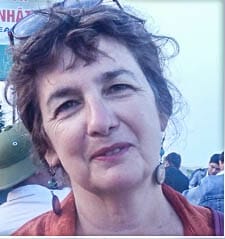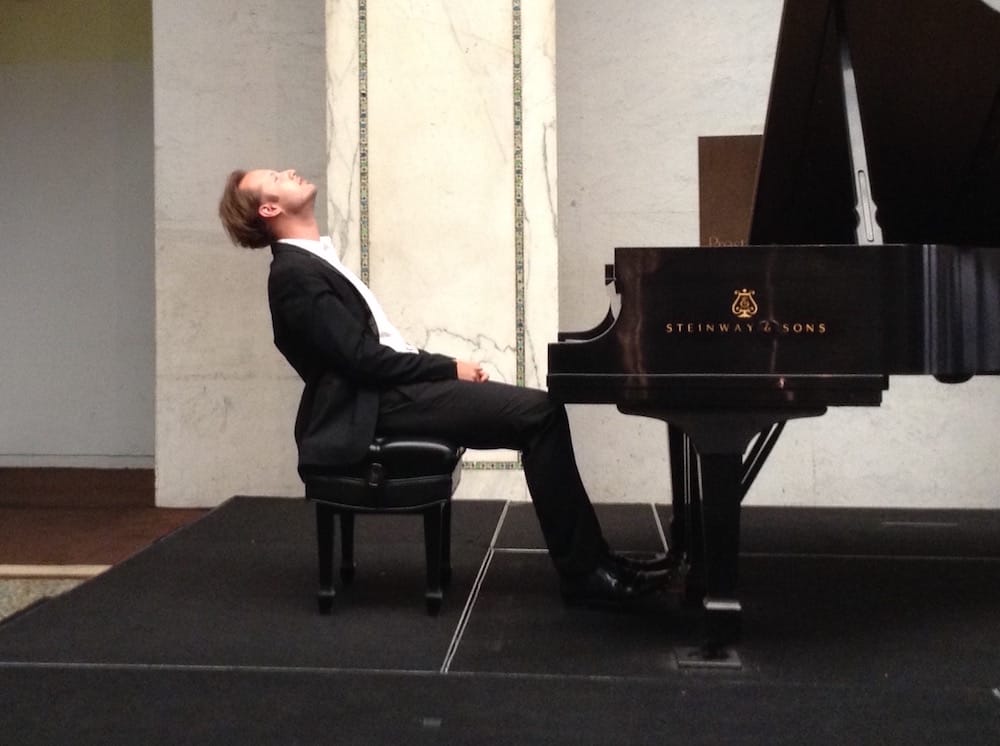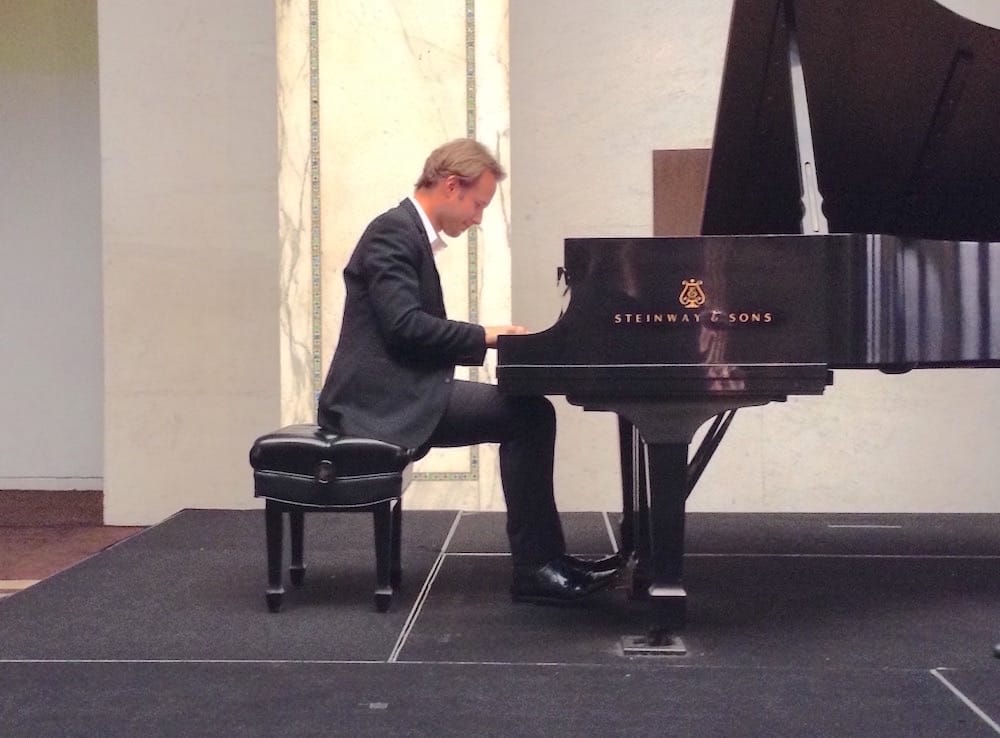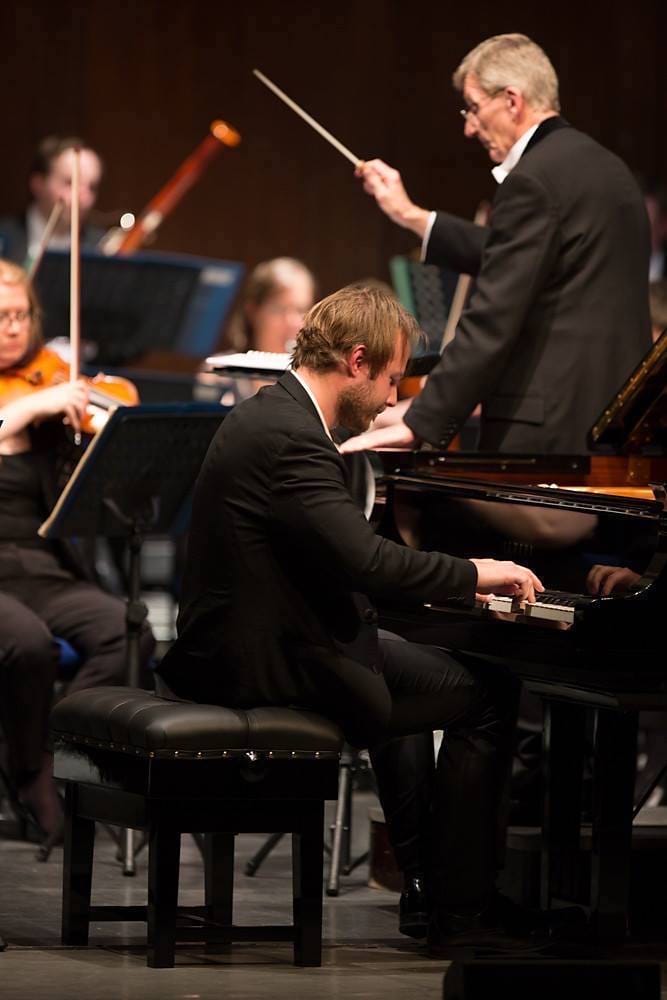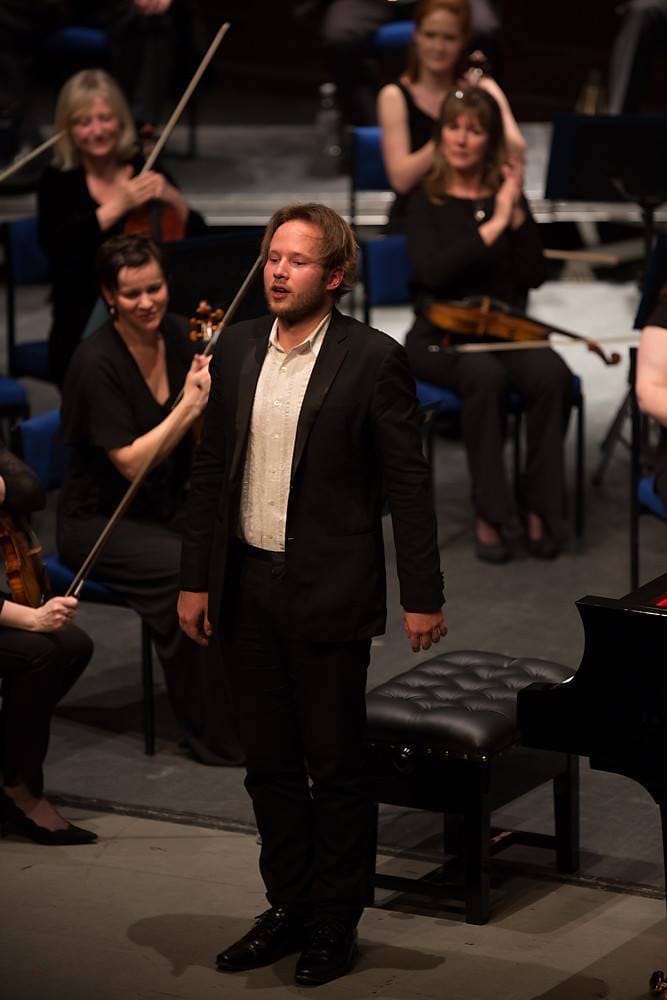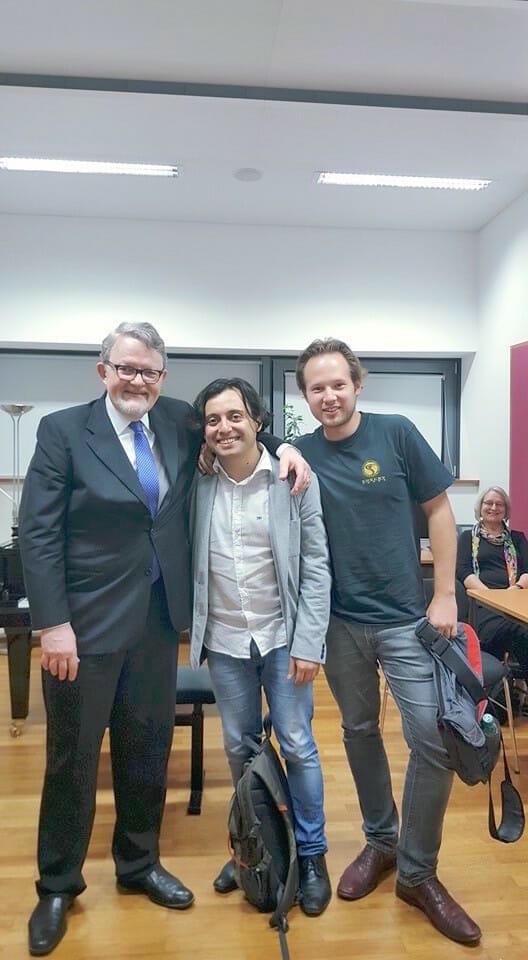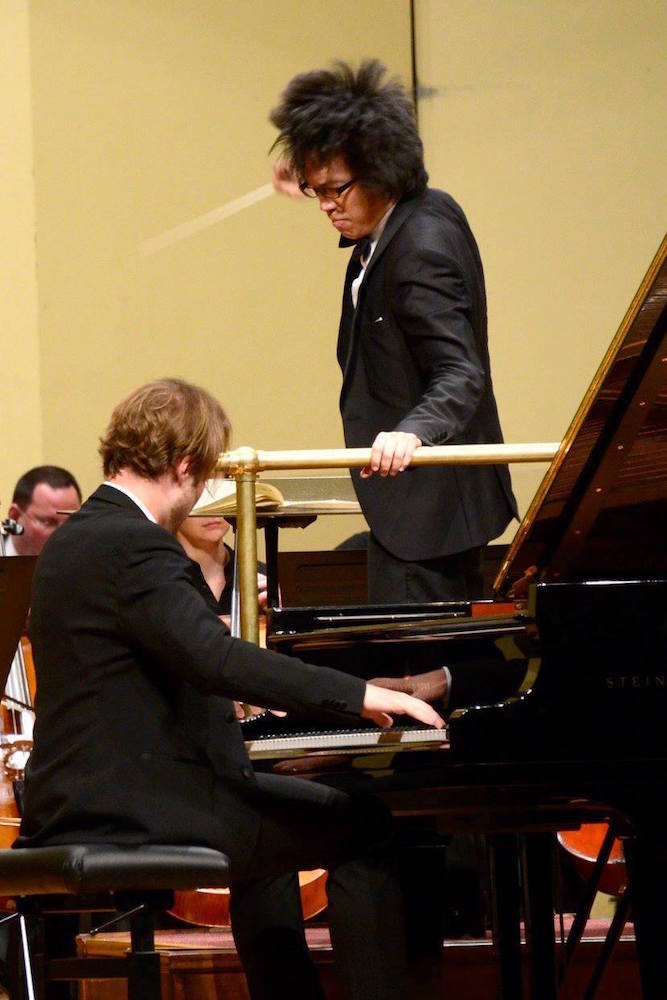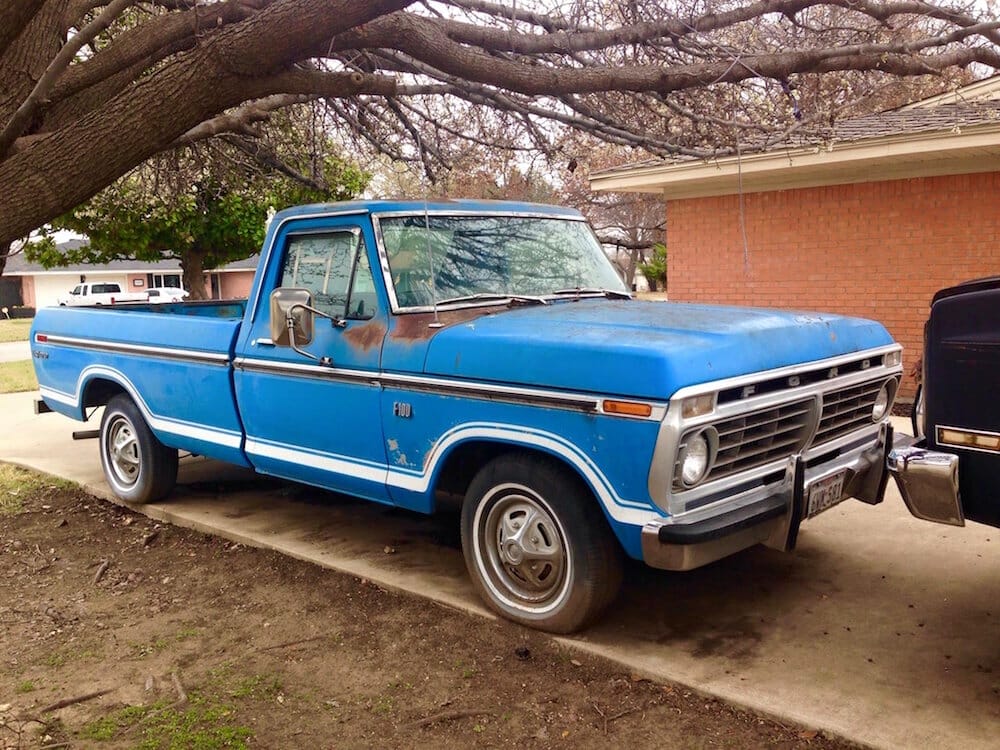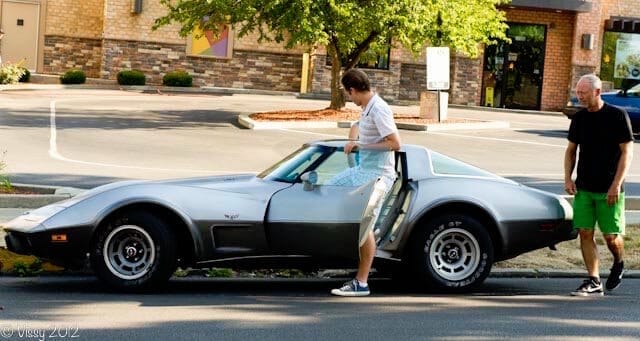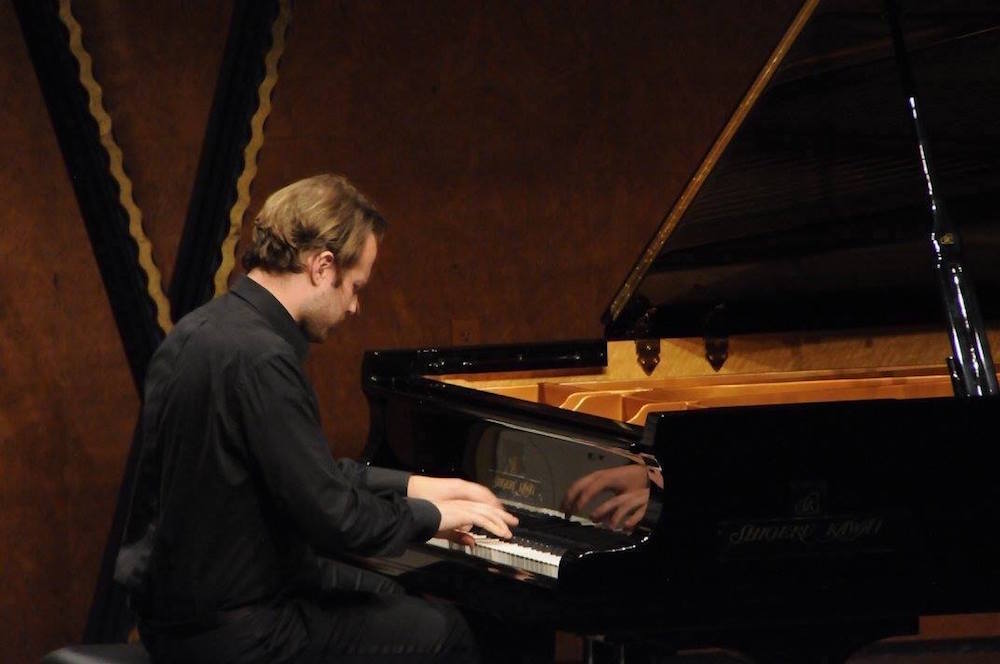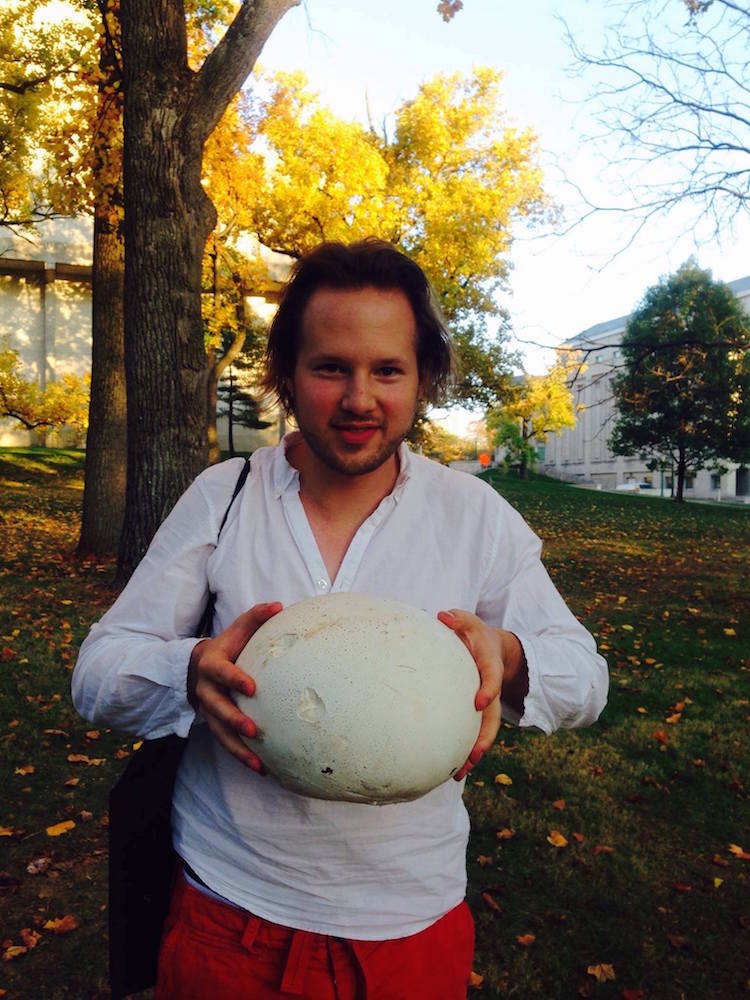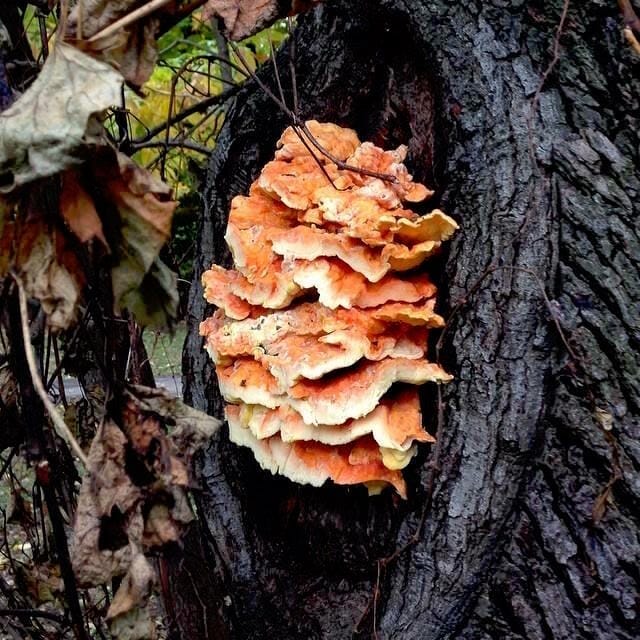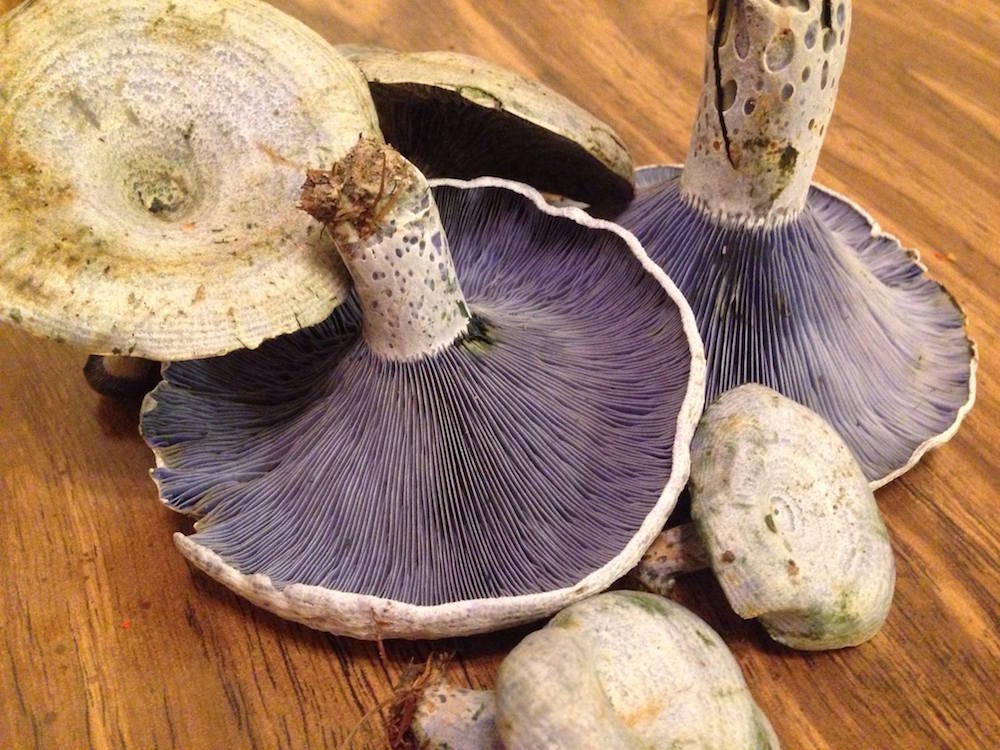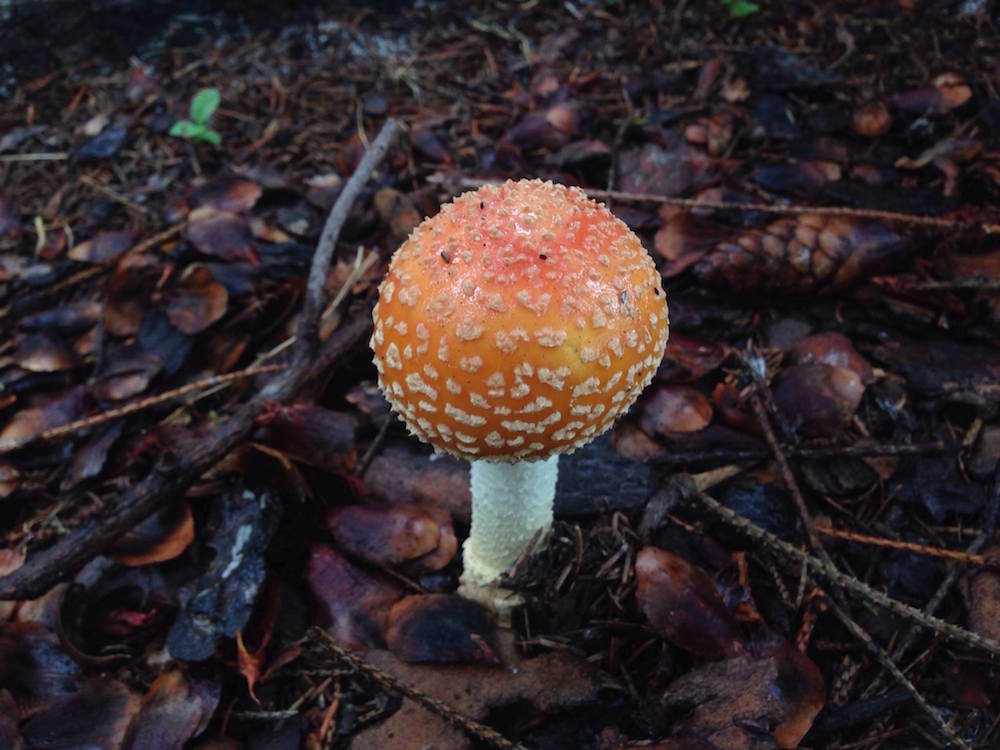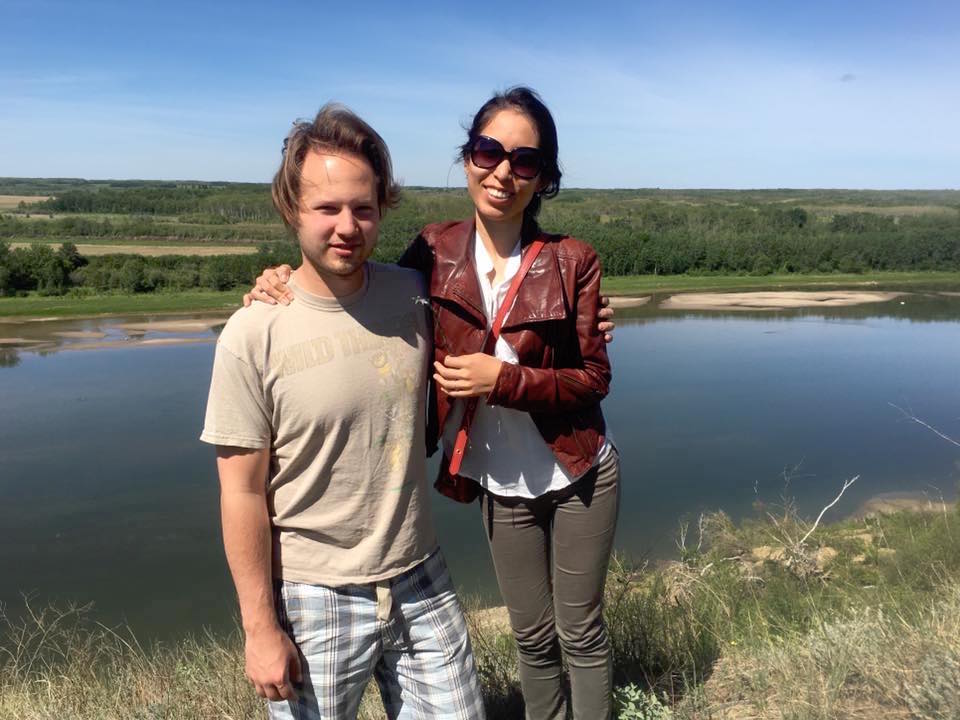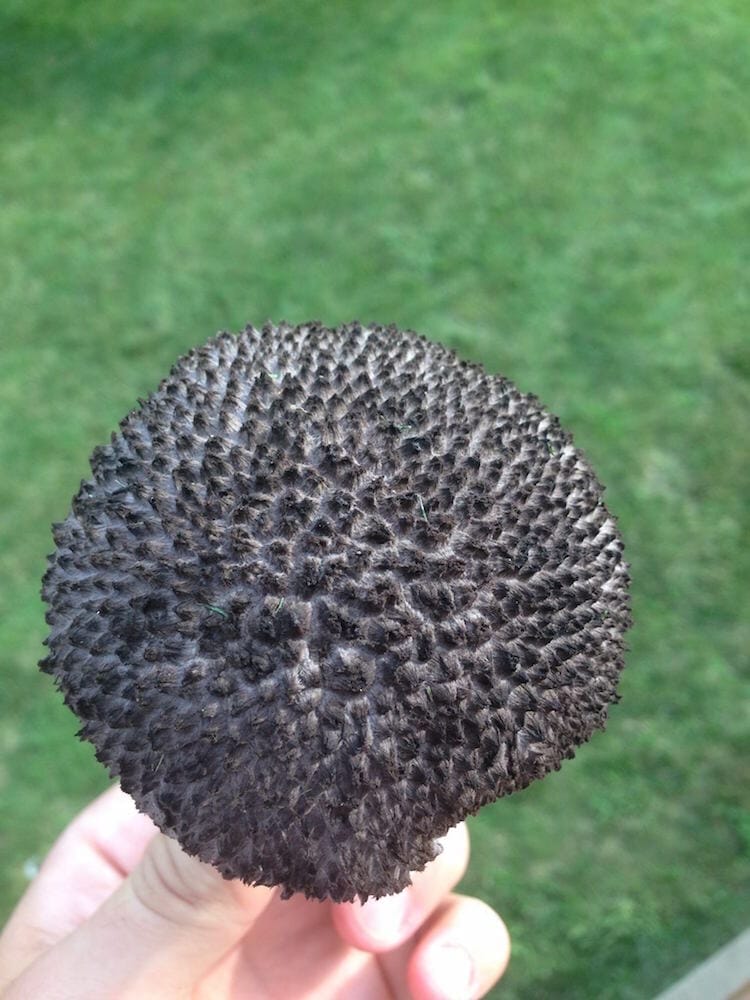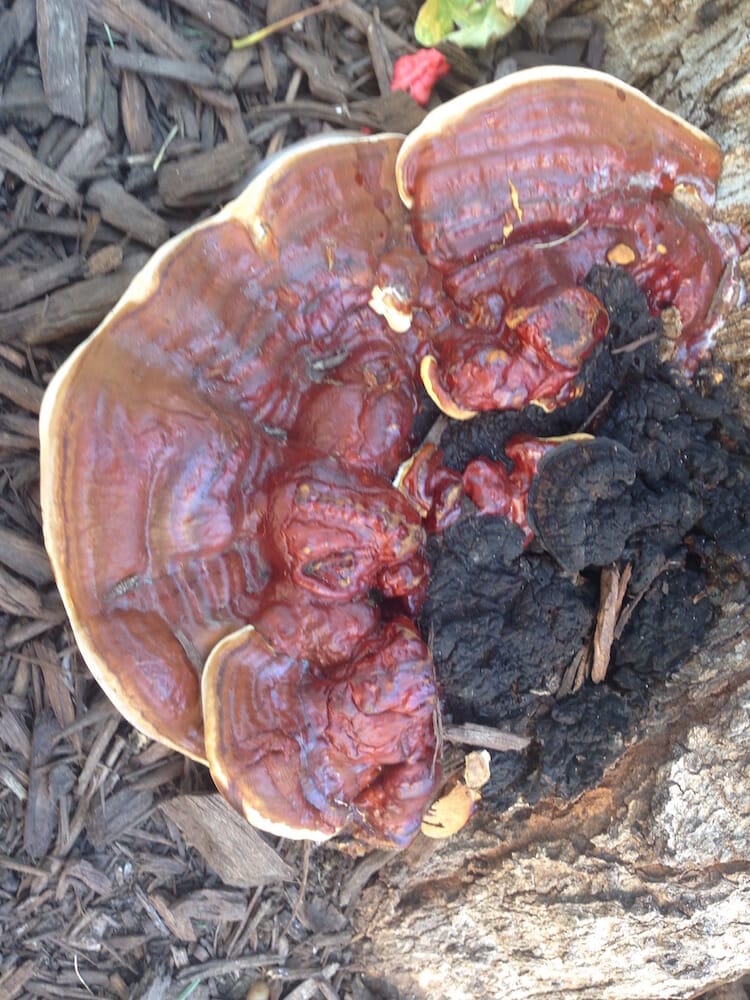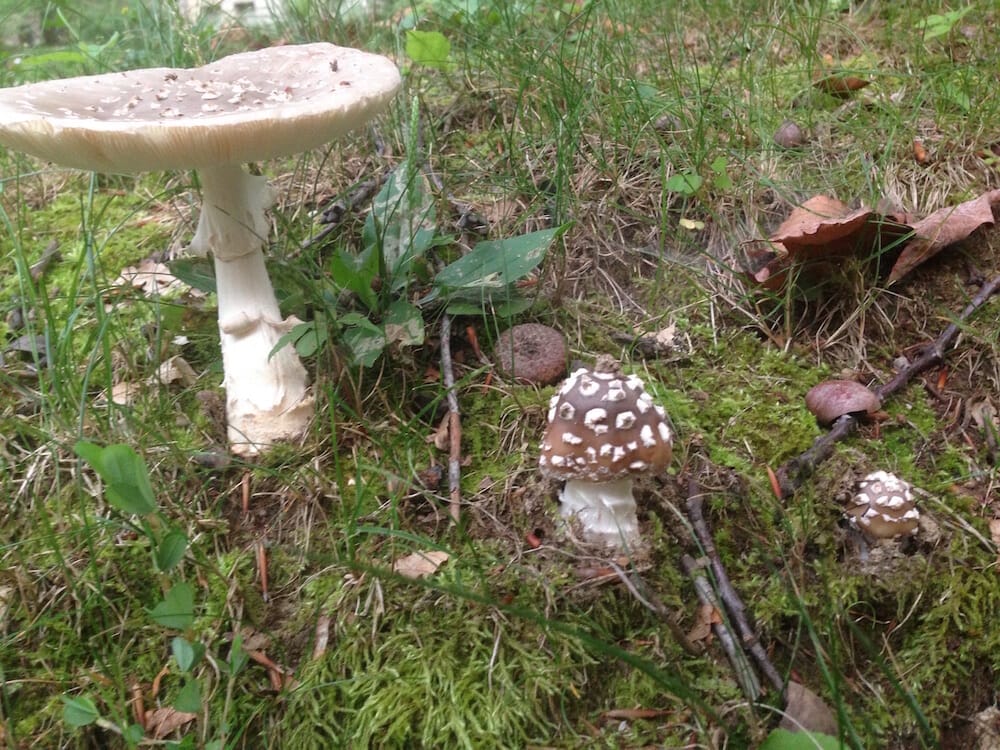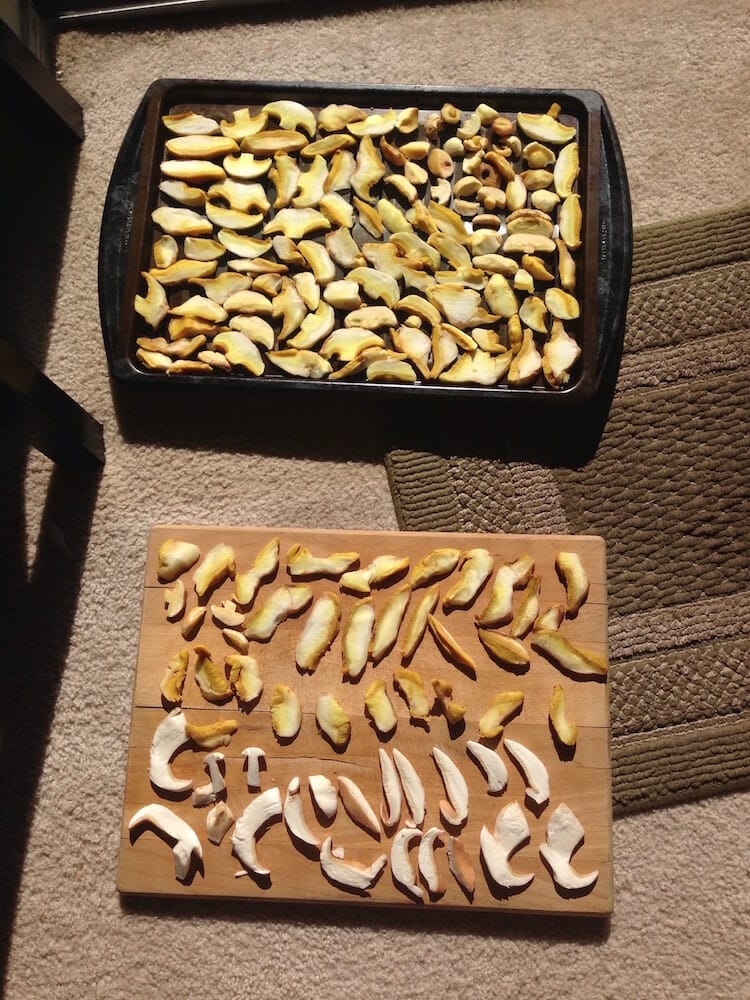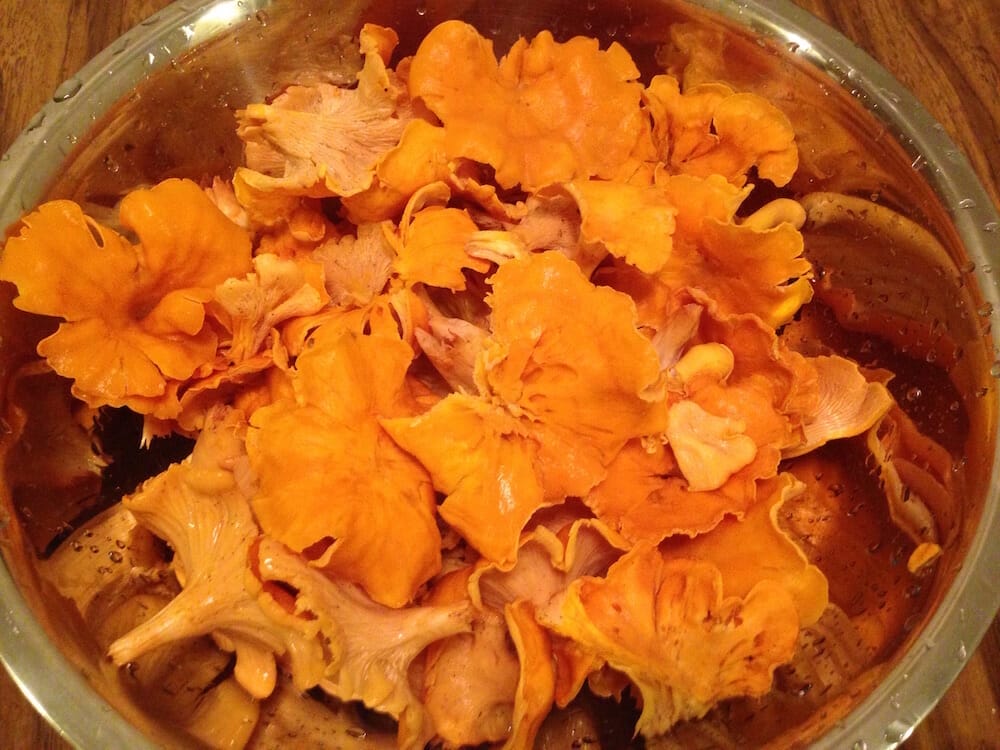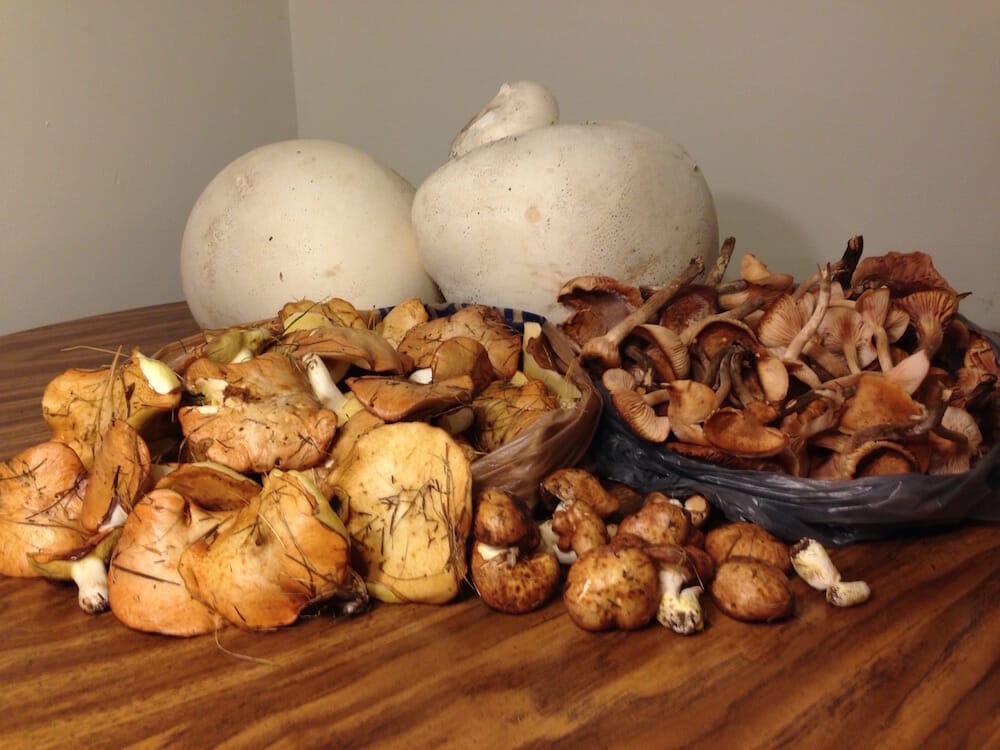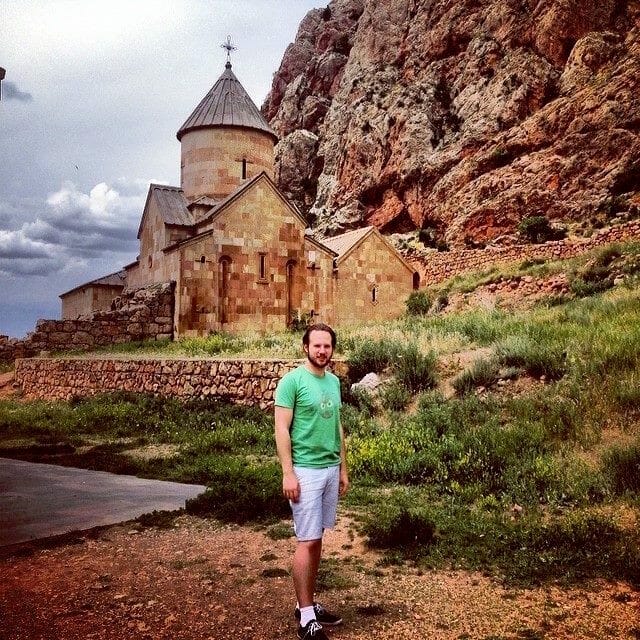On August 31, 2016, the near capacity audience in Preston Bradley Hall jumped to its feet in a standing ovation for Canadian pianist Samuel Deason.
This was his second Dame Myra Hess performance in that hall, also simulcast on WFMT.
Click here to find profiles of other Dame Myra Hess musicians.
He had just performed two short works inspired by birds—”Le Rappel des Oiseaux” from Rameau’s “Suite for Keyboard in E Minor” and Glinka’s “The Lark”. These were followed by an especially dark “Ballade in G Minor” by Grieg, which perhaps Sam’s Norwegian ancestry had allowed him to understand in a more personal way. The finale was a scherzo by Brahms, “Scherzo in E-Flat Minor”. In a conversation before the performance, Sam had described this as an unusually maniacal piece for Brahms. Observers in the front of the hall could see a mischievous glint in Sam’s eye and overall expression as he played this Brahms piece that closely matched that descriptive.
A Concert That Almost Didn’t Happen
It’s likely no one in the hall would have suspected the moment in 2001 that could have derailed the performance they had so enjoyed that day.
Sam was 13 then, and doing what he calls “petitioning’ his parents to let him quit the piano, and instead pursue his many other interests in life—from football, to stars, and more.
It was the fall, which was when he was always assigned to learn an entire new repertoire. He hated that. Playing music he already knew well was what was enjoyable, not struggling with learning the notes of new compositions. 13 year-old Sam thought it was a big waste of time because he certainly would never be a professional musician.
Truth be told, unlike the lion’s share of musicians who make it to the Dame Myra Hess hall, 13-year old Sam had only practiced a half hour or so a day since he started piano lessons when he was 3 ½. Launching Sam on a musician career wasn’t necessarily his parents’ plan. Curious toddler Sam had gravitated towards his Mom’s piano and the hope was he’d just not sound so bad. His mother, Phyllis Deason, had studied piano in her youth, but with no professional intent. His father, Paul Deason, had been a rock musician at one time, and that had enabled him to pay for college. Music was in the house, but Sam was never pushed to do too much more than he wanted to—until that fateful showdown when he was 13.
The upshot was an agreement that Sam would only have to study piano for one more year AND he would get a new teacher. The latter proved providential. Not only did his new teacher Bonnie Nicholson, a friend to this day, re-inspire young Sam to get back to the piano, but also she was able to convince him that he had the type of natural talent that matters.
Sam recounts, “I had never considered this before. I had been lazy, never putting too much effort into playing. It was a gradual awakening. Bonnie was incredibly inspiring and she implanted a deep love of music. I began to see practicing as an investment in the future..”
Their bond is such that to this day Sam tries to arrange time in his busy performance and school schedule to work with Bonnie’s students in Saskatoon each month.
Sam Deason’s Many Musical Mentors
Bonnie was actually the first of many important mentors that have guided Sam’s musical development. Sam mentions several in particular, saying “Marc Durand at the Glenn Gould School in Toronto gave me the entire world– confidence and an awareness both of when I was doing well and how I needed to improve…
“Menahem Pressler at Indiana University made me feel really guilty. He’s 93 now and when he was my teacher he was already 91. He would practice six hours every day and if I only practiced for five hours I would feel bad…
“He was a very emotional teacher and from him I learned how to find and communicate the different emotions in a piece. To him music was a life or death pursuit. In his 90th year he was performing 50 to 60 concerts. He’d be on a plane to Europe every other week. Every concert was an opportunity to take another breath—to live another day. This came through in his teaching and just being around him. He is overwhelmingly grateful for music, which basically gives him life to this day…”
Talk to Sam just a short while and you sense he is really quite a kindred spirit to the Menahem Pressler he describes.
Sam’s admiration for his current teacher and mentor at the Peabody Institute, Boris Slutsky, is also strong. Sam comments, “I’m now starting the second year of my studies with him. He is very demanding. At the same time he is very encouraging and open-minded to my own musical ideas, focusing much of his advice on how to help me present these ideas in a more convincing way. He acts very much like a mirror, reflecting back what I have done so that I might gain an even deeper awareness and perspective of my own playing.”
Sam Deason’s Musical Intensity
Playing music is so intense for Sam that what he actually prefers to listen to when not rehearsing is pure silence. Sam comments, “If I am practicing all day, my ears can become over-stimulated. I begin to hear music that isn’t being played. If then I go home and listen to more music it can feel like it can feel like going for sushi after a steak dinner. One needs time to digest! You can’t appreciate music unless you have the absence of music to counterbalance it.”
Mushroom Mental Health Breaks
These days, to relax, Sam immerses himself in the world of mushrooms.
Sam’s mushroom enchantment began when he was very young and his parents told him not to eat them. This proscription fascinated him. “Why not?”, he thought.
Today that fascination with mushrooms sounds bottomless–
“It’s endless. It’s wonderful and beautiful, coming in all different sizes, shapes, colors and tastes. One year I decided I needed to know more about them, and for the past few years I’ve made it my small obsession. At this point, I know how to pick a dozen or two different varieties and it makes it worth the adventure.”
Music Comes First
If time permitted, Sam would like to spend far more time foraging for mushrooms. Music comes first though.
This is what Sam said about the program he chose to play when he learned that the Dame Myra Hess format and sync with the radio show wouldn’t allow a performance of the Diabelli Variations by Beethoven due to length considerations.
“There is a lot of music out there that other people find weird. I don’t care. I always play what I like because I know if I don’t like it I just won’t have fun with it….
More on Samuel Deason’s Dame Myra Hess Concert Program
“Starting with the Rameau – a baroque composer- his works are played much less than Bach’s works. But his music is magnificent! “Le Rappel des Oiseaux” is a very personal and sincere elicitation of bird-calls– quite magnificently done considering what harmonic and instrumental tools Rameau had at his disposal.
“After than I chose another piece inspired by birds—“The Lark” It was written by Glinka as a song and subsequently transcribed by Balakirev for solo piano. In addition to Balakirev’s harmonic inventiveness, he significantly embellished and expanded the original–all while retaining the melancholic, contemplative and searching nature.
“Grieg’s ‘Ballade in G Minor’ – is one of his most special pieces, but very gloomy and depressing. He composed it right after the death of both of his parents. Considering that his daughter had died a few years before that, it would seem that he had many dark moments in his life. He wasn’t healthy. He wanted to go to the US, but his health didn’t permit it.
“The Ballade is anomalous. Most of what Grieg wrote for the piano were short lyric pieces- romantic miniatures about a butterfly, a little bird, spring, etc….. I wouldn’t be surprised though if a Norwegian living 100 years ago thought of spring with enormous meaning. Having gone through the harsh winter (without central heating!) I would imagine the longing for spring to be quite hopeful of renewal and rebirth.
“Embedding the story-telling essence of a ballade into a structure of variations, the likeness to Brahms or even Beethoven is evident. The melodically simple theme (a centuries-old Norwegian folksong) is harmonized with extremely complicated chromaticism. It gradually unfolds through each miniature-inspired variation, resolving into harmonic simplicity as a relentless fortissimo drone in the left hand overcomes everything, insistently driving the piece into a frenzy.
“It was an extremely challenging piece in the program to perform because of the emotional content, but also because of the many tempo changes. The piece changes so much it’s difficult for the audience to hear it. But it’s incredibly rewarding to perform– so adventurous harmonically and challenging throughout.
“Then there is the Brahms scherzo. Brahms was 18 or 19 when he wrote it. It was one of his first pieces- and most of his music doesn’t sound like this as his style evolved…it’s very electric and maybe a bit rough around the edges, but it’s fun to play. There aren’t too many pieces in E flat minor. He may have been experimenting with writing in strange keys.
“When you are young you want to be different. Usually a scherzo is lighthearted. This though is maniacal—a mischievous and sinister joke—like a poking in the eye…
“..I could talk about this for hours…
Sam Deason’s Other Musical Dreams
“Performing a concert is a thrill. There is always a certain amount of spontaneity that is attractive and magnetic…
“But I think I might also be one of the few Dame Myra Hess performers who also think that curating might be a very interesting role….There are so many different ways of having a place in the music industry—teaching, performing, chamber, recording, administration….”
This notion of curating is actually something Sam has dreamed about in some detail.
Read about Sam Deason’s vision of creating a music festival in his native Saskatoon here.
Photos courtesy of Samuel Deason, unless otherwise indicated
Click here to find profiles of other Dame Myra Hess musicians.

